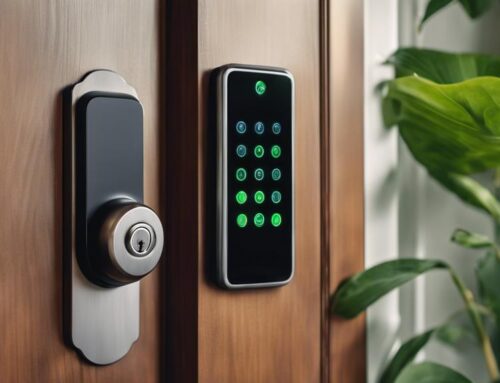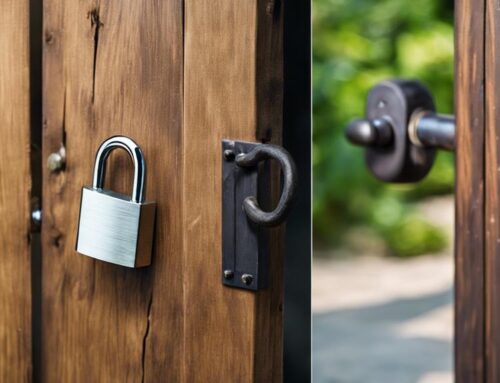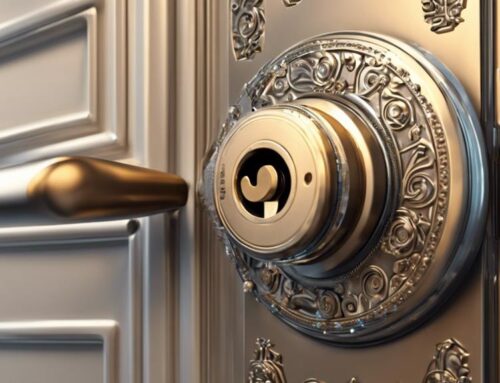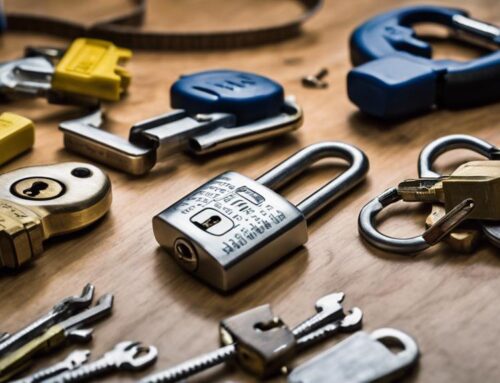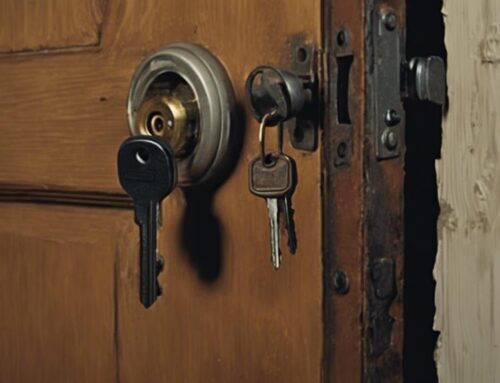Lock pins and tumblers are key components in securing your spaces. When you insert the right key, its cuts push the key pins upward, allowing them to align properly at the shear line. This alignment frees the lock, enabling you to turn it and release the door. Different types of pins exist, such as standard, master, and security pins, each designed to enhance security in various ways. Misalignment of even a single pin can prevent the lock from operating. Understanding this interaction helps you appreciate the sophistication behind lock security. Stick around to uncover more details about these fascinating mechanisms.
Key Takeaways
- Lock pins and tumblers work together to prevent unauthorized access by requiring correct key alignment at the shear line.
- Pin tumbler locks consist of key pins and driver pins that must align precisely for the lock to operate.
- Different types of pins, such as standard, master, and security pins, enhance the lock's security against picking and unauthorized access.
- The unique shape of a key corresponds to specific pin heights, ensuring only the correct key can engage the tumblers.
- Regular maintenance and the use of high-security locks can significantly improve the overall effectiveness of lock mechanisms.
Overview of Lock Mechanisms
Lock mechanisms are essential devices that secure our homes, cars, and valuables. By understanding how locks work, you empower yourself to help others feel safe and confident in their environments.
At the core of most traditional locks are lock pins and tumblers, which play a vital role in their functionality. These tumblers, when properly aligned, create a barrier against unauthorized access, but they can also be vulnerable to manipulation, making it important to comprehend their function for enhanced security (understanding tumblers).
When you insert a key into a lock, it aligns the pins to the correct height, allowing the tumblers to rotate and release the mechanism. This simple yet effective design highlights the importance of understanding lock components.
Each part works in harmony to provide security, ensuring that unauthorized access remains a challenge.
Components of Pins and Tumblers
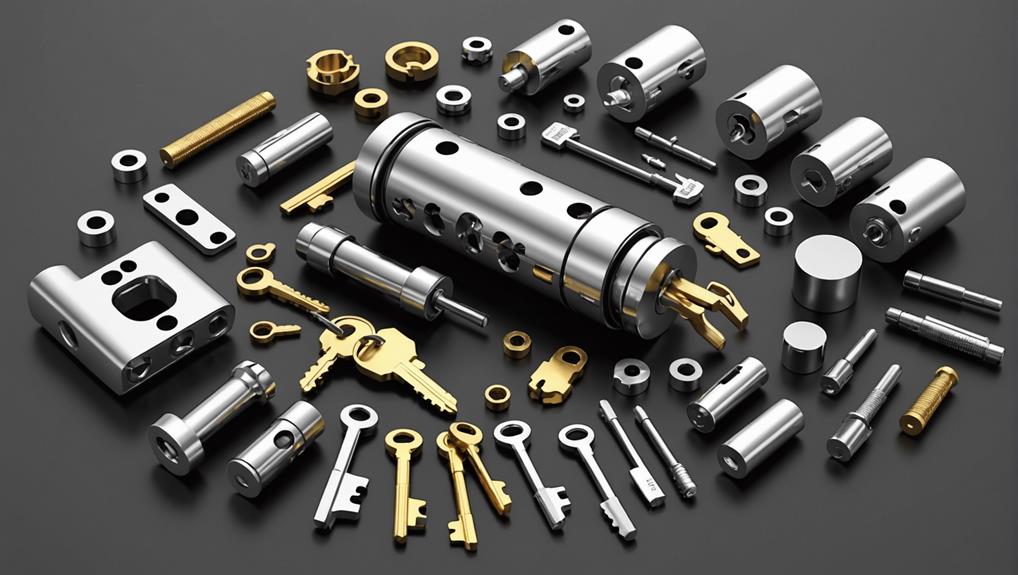
When you think about how locks operate, understanding the components of pins and tumblers is essential.
High-security lock pins are designed to provide enhanced protection by incorporating complex shapes and materials, making them difficult to manipulate. You'll find various types of lock pins, each playing a specific role in the locking mechanism, including standard and security pins, which can vary widely in design and function understanding high-security locks.
The interaction between these components is what ultimately determines whether a lock opens or remains secured.
Types of Lock Pins
Understanding the various types of lock pins is essential for grasping how pins and tumblers function in security systems. Each pin type plays a significant role in the mechanics of locks, enhancing lock security mechanics.
Here are three common types of lock pins you should know:
- Standard Pins: These are the most basic type, usually cylindrical and designed to align with the shear line when the correct key is inserted. They're essential for simple locks.
- Master Pins: These pins allow for the creation of master-keyed systems. They can stack atop standard pins, enabling multiple keys to operate a single lock. This is perfect for managing access in shared spaces.
- Security Pins: Often shaped like spools or mushroom, security pins complicate lock picking efforts. They create a false set, making it harder for unauthorized individuals to gain access.
Tumbler Mechanism Explained
At the heart of pin tumbler locks, the tumbler mechanism consists of precisely aligned pins that work together to secure the lock. Each lock features a series of pins, typically two for each position: the key pin and the driver pin.
The key pin sits at the bottom, while the driver pin rests on top. When you insert the correct key, it pushes the key pins upward, aligning them to a specific shear line. This alignment is essential for the lock to turn and release.
You'll notice that each pin is designed to match varying depths on the key, creating a unique configuration. This uniqueness guarantees that only the correct key can effectively engage the tumblers, preventing unauthorized access.
The materials used for the pins are often chosen for durability, ensuring that the mechanism withstands repeated use while maintaining its integrity.
Interaction of Components
The interaction of pins and tumblers is essential for a lock's functionality, as each component must work in harmony to guarantee security. When you insert a key, it aligns the pins within the cylinder, allowing the lock to turn. Understanding this interaction can help you appreciate the mechanisms that keep us safe.
Here are three key points to contemplate:
- Key Design: Each key is uniquely designed with cuts that correspond to specific pin heights. When you insert the correct key, it lifts the pins to their shear line, allowing the cylinder to rotate smoothly.
- Pin Types: Pins come in various shapes, including standard, spool, and serrated. Each type serves a purpose, making it more challenging for unauthorized access. They interact dynamically with the key, creating a unique locking mechanism.
- Tumbler Alignment: The tumblers must align perfectly with the key cuts. If even one pin remains misaligned, the lock won't turn, ensuring that only the rightful key can grant access.
How Pins Align With the Key
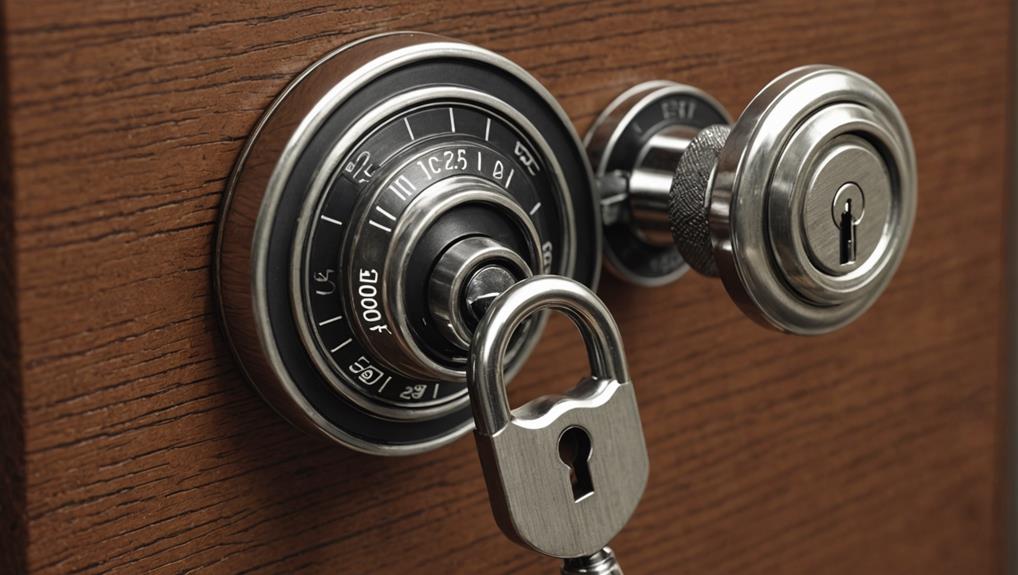
When you insert a key into a lock, its unique shape guides the pins into position. This intricate alignment process is vital for the lock's functionality and involves the careful arrangement of the internal mechanics of the lock that interact with the key.
Different pin lengths play an essential role in this alignment, ensuring that the tumblers rise to the correct height. This precise process is what allows the lock to turn smoothly and securely.
Key Shape Design
As you insert a key into a lock, the unique shape of the key interacts with the pins inside, guaranteeing that they align perfectly. This alignment is essential for the lock to function properly.
The design of the key includes specific features that dictate how the pins move, providing a secure locking mechanism. Here are three key design elements that contribute to this process:
- Notches: The notches on the key correspond to the pins' heights, allowing them to be pushed up or down as the key turns.
- Width: The width of the key guarantees that it fits snugly within the lock, preventing any wobbling that could disrupt pin alignment.
- Profile: The overall shape or profile of the key is crafted to engage with the lock's internal mechanisms, guaranteeing that only the correct key can align the pins.
Pin Length Variation
Key design elements, like notches and profile, work in tandem with pin length variation to guarantee effective lock operation.
When you insert a key into a lock, the varying lengths of the pins play a vital role in aligning with the key's unique shape. Each pin corresponds to a specific notch on the key, and this match allows the pins to either rise above or remain below the shear line.
This variation is essential because it prevents unauthorized access. If the key doesn't fit perfectly, the pins won't align correctly, keeping the lock secure.
You can think of it as a puzzle where only the right piece can complete the picture.
Tumblers' Alignment Process
How do tumblers align with the key to open a door? When you insert the key into the lock, each pin and tumbler interacts in a precise way. Your key's unique cuts push the pins to different heights, aligning them for the lock to turn smoothly. Here's how the alignment process works:
- Key Insertion: As you slide the key into the lock, its shape engages the pins. Each cut on the key corresponds to a specific pin height, which is vital for proper alignment.
- Pin Movement: The key's ridges push the pins upward. When the pins reach the correct height, they align with the shear line of the lock cylinder. This alignment is essential for the lock to function.
- Lock Engagement: Once all pins are correctly aligned, the lock mechanism is freed. You can then turn the key, allowing the door to open.
The Role of the Shear Line
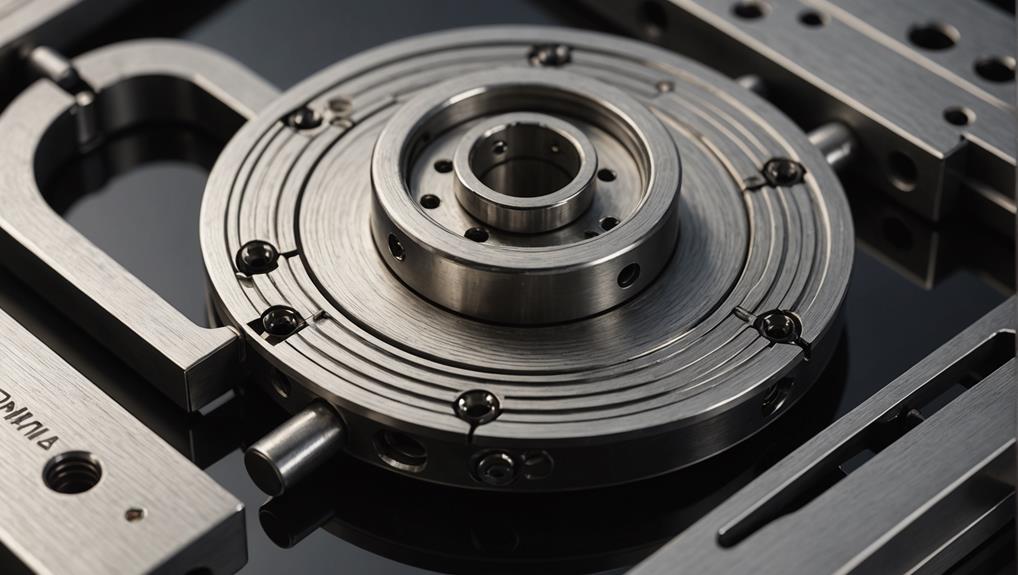
At the heart of a lock's mechanism lies the shear line, a crucial component that determines whether a lock can be opened or not. The shear line is the specific point at which the pins within the lock align perfectly, allowing the cylinder to rotate freely.
When you insert a key and turn it, the key pushes the tumblers upward. If each tumbler aligns correctly at the shear line, you can open the door. Understanding the shear line is essential for anyone interested in helping others with their locking mechanisms, as it plays a significant role in lock re-keying benefits. It's where the magic happens, and knowing how it functions can guide you in assisting someone locked out or troubleshooting a malfunctioning lock.
If the tumblers aren't aligned at the shear line, the lock remains secure. This is a fundamental design feature that enhances security, as it prevents unauthorized access.
Security Features of Pin Tumbler Locks
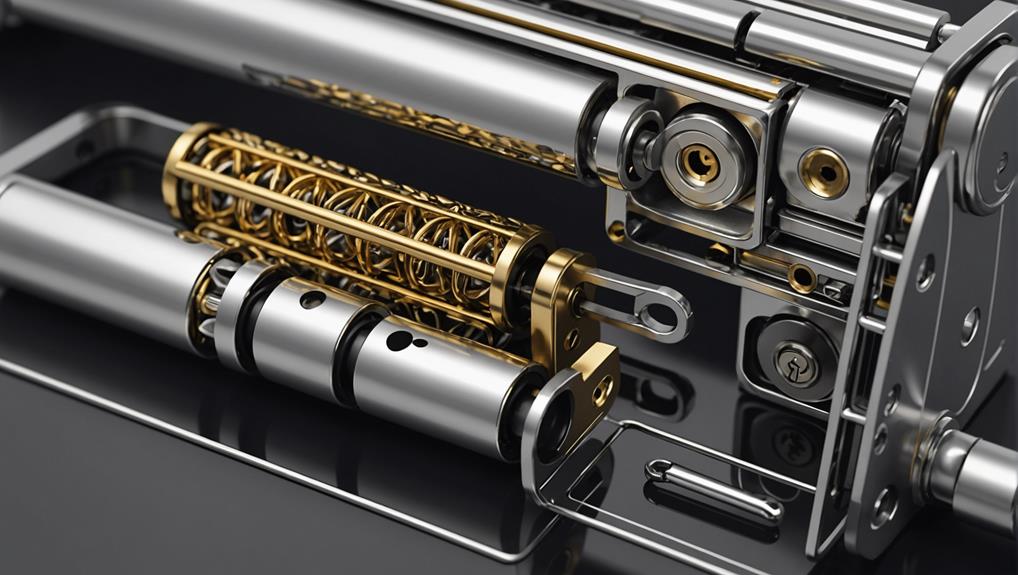
Pin tumbler locks offer several security features that make them a popular choice for protecting homes and businesses. These features not only enhance security but also provide peace of mind for those you serve.
Regarding high-security needs, re-keying vs. replacing locks can play an essential role in maintaining security without the need for complete lock replacement. Here are three key security aspects to take into account:
- Variety of Key Combinations: Each pin tumbler lock can have thousands of unique key combinations, making it difficult for unauthorized individuals to gain access. This variety guarantees that even if someone has a similar key, it won't work.
- Anti-Pick Design: Many pin tumbler locks come equipped with anti-pick features, such as mushroom pins or security pins, which complicate the lock-picking process. This added layer of security helps deter intruders who might attempt to bypass the lock.
- Rekeying Capability: If a key is lost or stolen, you can easily rekey a pin tumbler lock without replacing the entire lock. This flexibility allows you to maintain security while minimizing costs and inconveniences.
Common Types of Pin Tumbler Locks
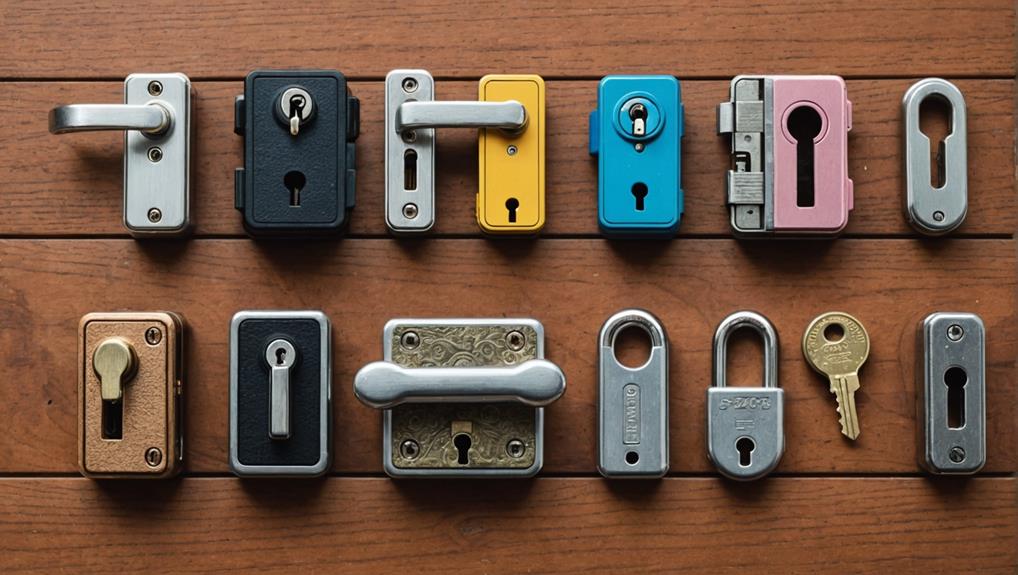
Understanding the different types of pin tumbler locks can help you choose the right security solution for your needs. Here's a quick overview of some common types you might consider:
| Lock Type | Description | Use Case |
|---|---|---|
| Standard Pin Lock | The most common, using basic pin tumblers. | Residential doors |
| Master Key Lock | Allows multiple keys to open the same lock. | Commercial buildings |
| High-Security Lock | Features advanced pin configurations. | Safes and high-value items |
Each type serves a unique purpose. Standard pin locks are reliable for everyday use, while master key systems offer convenience for managing access in larger spaces. If you're looking for enhanced security, high-security locks are designed to resist picking and unauthorized entry.
Choosing the right type of pin tumbler lock not only protects your property but also provides peace of mind. Assess your specific needs and consider the level of security required, ensuring that you serve both your interests and those of others who depend on your security measures.
Limitations and Vulnerabilities
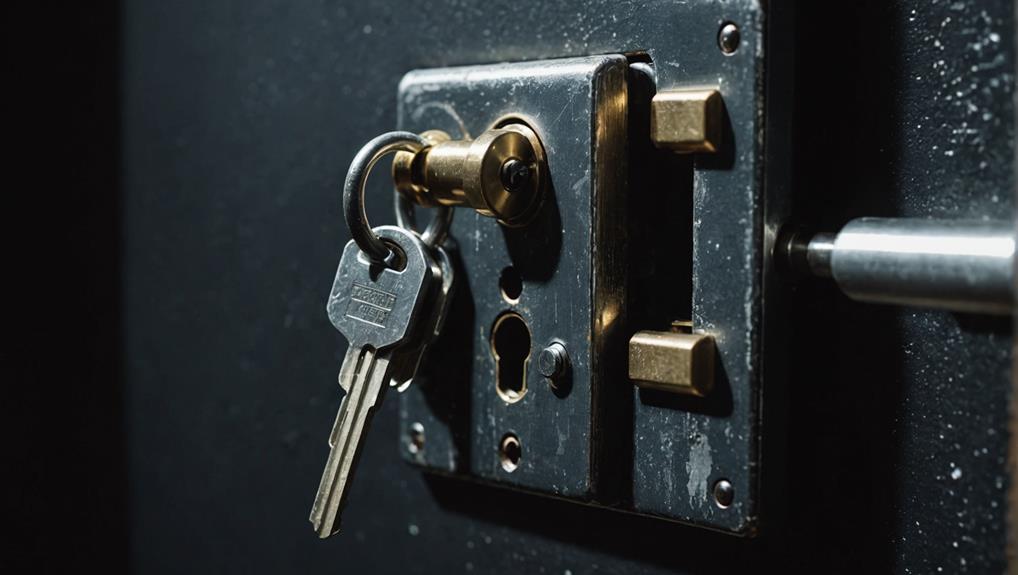
While pin tumbler locks are widely used for their convenience and reliability, they do have limitations and vulnerabilities that can compromise security. Understanding these weaknesses can help you serve others better by ensuring they're aware of potential risks.
It's crucial to acknowledge that opting for low-cost locksmith services may exacerbate these vulnerabilities, as cheap options often lack the necessary expertise and quality tools to effectively address lock issues.
The risks of low-cost services can lead to further security concerns and potential lock failures.
- Bumping: This technique involves using a specially crafted key to manipulate the pins, allowing unauthorized access. It's surprisingly simple and can be done quickly.
- Picking: Skilled locksmiths or intruders can exploit the lock's design to manipulate the pins, aligning them without the original key. This method requires practice but can be effective against many standard locks.
- Wear and Tear: Over time, the internal components of a pin tumbler lock can wear out or become misaligned, making them easier to bypass. Regular maintenance is often overlooked, leading to increased vulnerability.
Tips for Enhancing Lock Security
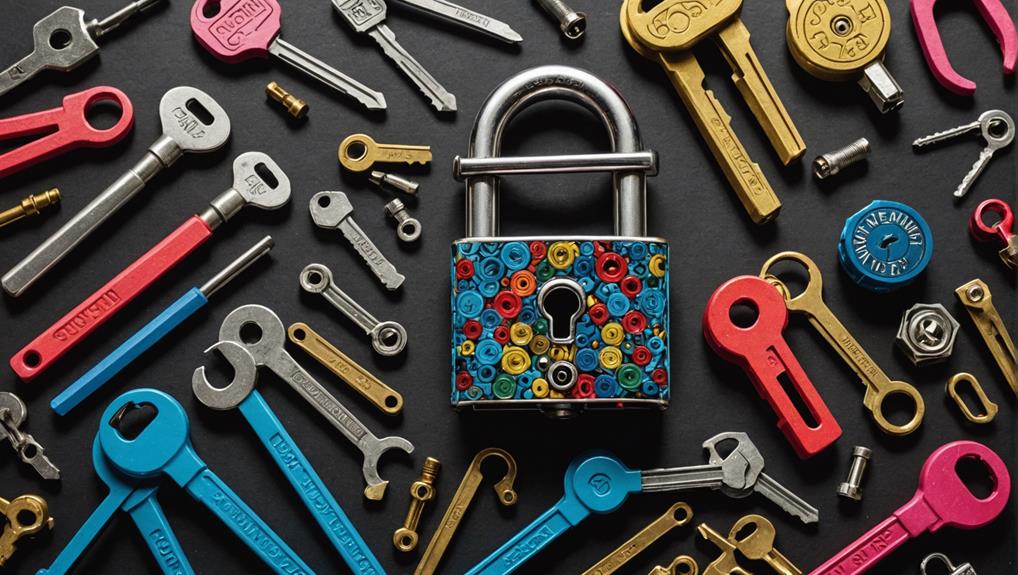
To bolster your security against the vulnerabilities of pin tumbler locks, consider implementing several effective strategies.
First, invest in high-security locks designed to resist picking and bumping. These locks often feature advanced mechanisms that provide an added layer of protection. Additionally, re-keying locks can be a cost-effective way to enhance security without the need for complete replacement, as it allows you to change the internal pins and tumblers to work with a new key, effectively unlocking savings.
Next, regularly inspect your locks for wear and tear. If you notice any signs of damage, replace them promptly. A well-maintained lock is less likely to fail when you need it most.
Additionally, consider using a deadbolt in conjunction with your standard lock. This combination creates a formidable barrier against unauthorized access.
Another essential step is to rekey your locks when moving into a new home or after losing a key. This guarantees that only you have access to your property.
You should also think about installing a smart lock, which can offer keyless entry and alerts for unauthorized attempts.
Frequently Asked Questions
Can Pin Tumbler Locks Be Rekeyed Easily?
Yes, you can rekey pin tumbler locks fairly easily.
It's a practical solution if you want to enhance security without replacing the entire lock. You'll need to remove the lock cylinder, replace the old pins with new ones that match your new key, and reassemble everything.
This process allows you to maintain control over who's access to your space, ensuring your safety and peace of mind.
It's a handy skill to have!
What Materials Are Used in Pins and Tumblers?
When you think about the materials used in pins and tumblers, you're looking at a mix of metals like brass, stainless steel, and sometimes even plastic.
Brass is popular for its durability and resistance to corrosion, while stainless steel adds strength.
Plastic components can also be found in some designs, offering lightweight options.
How Do Environmental Factors Affect Lock Performance?
Think of a sturdy castle door, weathered by time. Just like that door, environmental factors can greatly affect lock performance.
Moisture can cause rust, while extreme temperatures might lead to expansion or contraction of materials. Dust and dirt can jam mechanisms, making it harder for you to access your treasures.
Are There Any Maintenance Tips for Pin Tumbler Locks?
To keep your pin tumbler locks functioning smoothly, regular maintenance is key.
Start by lubricating the lock with a graphite powder or silicone spray every six months. Avoid using oil-based lubricants, as they can attract dust and dirt.
Check for any debris in the keyhole and clean it out gently.
What Are Common Misconceptions About Pin Tumbler Locks?
Many folks think pin tumbler locks are unbreakable, but that's far from true. You might believe that all locks are equally secure, but some are more vulnerable than others.
Another misconception is that you can't pick these locks; with the right tools and skills, it's possible.
Finally, some think they don't need maintenance, but regular upkeep can extend a lock's life and improve security.
Being informed helps you serve others better!
Conclusion
In summary, understanding how lock pins and tumblers work can empower you to enhance your security. By recognizing the interplay between the key and the pins, you can guarantee your lock isn't just a facade, but a reliable guardian of your space. Just like a well-tuned instrument, every component plays an essential role in harmony, creating a fortress against unwelcome intrusions. So take the time to fortify your locks and safeguard what matters most to you.


